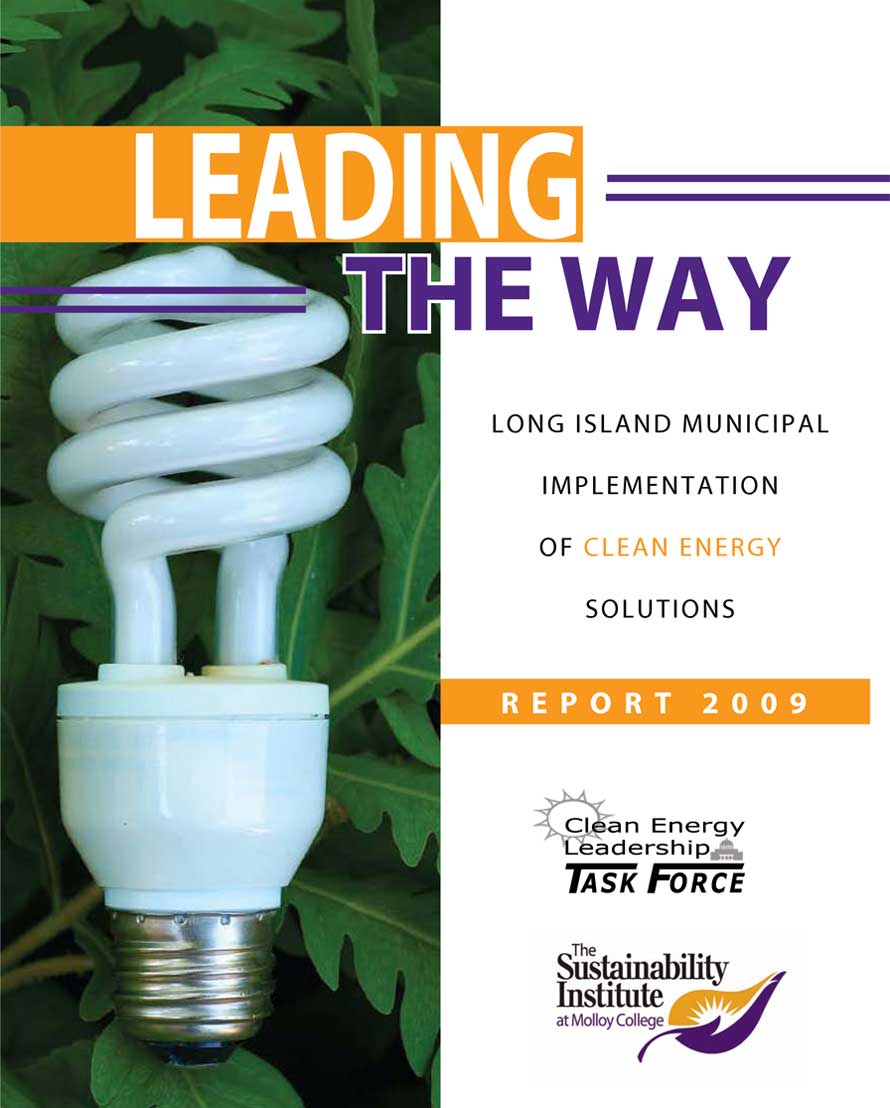
21 Feb NEW TOWN OF BROOKHAVEN LAW THREATENS TO MAKE HUNDREDS OF SIGNS ILLEGAL ON JANUARY 1, 2013
Melville, NY (Feb. 22, 2012) – The Town of Brookhaven (the “Town”) has recently adopted Local Law No. 28 (the “Local Law”), which imposes significant changes to the Town’s Sign Ordinance. The Local Law has the potential to impose a significant financial burden on business owners by rendering hundreds of signs in the Town illegal, as soon as January 1, 2013. In particular, the Local Law provides a brief one (1) year amortization provision wherein nonconforming signs must be brought into compliance by January 1, 2013, or the property owner or tenant may face significant monetary penalties from the Town. In addition, the Local Law dramatically reduces the permitted height of free standing signs in the J-5 Zoning District and eliminates Town Planning Board Variances for signs that do not comply with the Sign Ordinance, as amended. Among other amendments to the Sign Ordinance, the Local Law also provides rules for the new J-8 Zoning District and eliminates regulations for the previously discontinued J-3 and L-3 Zoning Districts.
Amortization of Nonconforming Signs and the Deadline
The Local Law contains an amortization provision which mandates that existing nonconforming signs be brought into compliance with the amended Sign Ordinance by January 1, 2013 (the “Deadline”). Signs that are not brought into compliance with the amended Sign Ordinance must be discontinued and removed by the Deadline. (Town Code §57A-23(A), as amended). The Local Law affords an opportunity to extend the Deadline by permitting an application to the Town Board of Zoning Appeals on the basis of “undue hardship,” however, no extension will be granted beyond December 31, 2016. (Code §57A-23(B), as amended).
The Town Building Department has interpreted the Local Law to provide that a property owner must either remove an existing nonconforming sign or obtain a Variance and/or a Certificate of Compliance before the Deadline, regardless of whether a prior Variance was granted. The failure to comply with the amended Sign Ordinance may be punishable by a fine of not less than $100.00 and not more than $500.00 or imprisonment for a period not exceeding 15 days for each violation. (Town Code §57A-24, as amended).
Amortization Provisions and the Courts
New York State case law has long-permitted amortization periods in which a Town may phase out a nonconforming use. The New York State Court of Appeals in Harbison v. City of Buffalo, 4 N.Y.2d 553, 176 N.Y.S.2d 598 (1958) concluded that a municipality may implement a “reasonable” amortization provision, taking into consideration the facts and circumstances in the action, to phase out a nonconforming use. The Court of Appeals undertook a balancing test by examining the nature of the affected business, the cost of the improvements erected on the land, the character of the neighborhood and the detriment to be suffered by the property owner. (4 N.Y.2d at 562-563).
To determine whether an amortization provision is reasonable, the Court considers, among other things, the monetary investment in the property as compared to the elapsed time since the investment was made. In Modjeska Sign Studio, Inc. v. Berle, 43 N.Y.2d 468, 402 N.Y.S.2d 359 (1977), the Court of Appeals upheld an ordinance prohibiting billboards with an amortization period that gave the owner an opportunity to recoup his investment and avoid substantial financial loss. Similarly, in Town of Islip v. Caviglia, 73 N.Y.2d 544, 560-561, 542 N.Y.S.2d 139 (1989), the Court of Appeals held that a determination of reasonableness includes the length of the amortization period in relation to the monetary amount of the investment and the nature of the use. The Caviglia Court stressed that the amortization period will necessarily increase as the amount invested increases and this maxim applies particularly where the amortization provision inures to a nonconforming structure rather than a nonconforming use. Id. The Caviglia Court further held that amortization provisions are presumptively valid, unless the aggrieved owner can demonstrate that the loss suffered is so substantial that it outweighs the public benefit gained by the exercise of the municipality’s police power. Id.
Period of Amortization
It appears, in this instance, that the one-year Amortization Period may be unreasonable. Generally, amortization provisions that have been upheld by the Courts, particularly for nonconforming signs, have been longer than one (1) year. The Appellate Division, Second Department, upheld a three (3) year amortization provision for offsite nonconforming commercial signs. (Suffolk Outdoor Advertising Co. Inc. v. Town of Southampton, 449 N.Y.S.2d 766 (2nd Dept 1982), aff’d 60 N.Y.2d 70 (1983)). Further, the Court of Appeals upheld a two (2) year amortization provision where the affected business failed to provide proof of a sign’s value (see People v. Artrol Corp., 325 N.Y.S.2d 800 (Village of Ocean Beach J. Court 1971), aff’d, 31 N.Y.2d 262 (1972)), and the Appellate Division, Fourth Department, upheld a ten (10) year amortization provision where the owner had the opportunity to fully capture depreciation of the sign for tax purposes (see Philanz Oldsmobile, Inc. v. Keating, 381 N.Y.S.2d 916 (4th Dept 1976)). Amortization provisions which contain a sliding scale based on the amount of the monetary investment at issue have also been upheld by the Court of Appeals. Town of Islip v. Caviglia, 73 N.Y.2d 544 (1989).
Here, the Town fails to take into account such considerations as the monetary amount invested in a sign, the ability to depreciate the sign for tax purposes, the adverse impacts caused by the Local Law, particularly to a business’s “good will” and the “soft” and “hard” costs of obtaining new signs.
New Height Restrictions for Ground Signs in J-5 Zoning Districts
The amended Sign Ordinance provides that free standing signs situated in the Town’s J-5 Zoning District may maintain a face area of 24 square feet. However, the height of a permissible ground sign is significantly reduced from 24 feet to 12 feet. (Previous Code §57A-7(c); Amended Code §57A-6(c)). The Local Law does contain a limited
exemption for existing signs that are located along the Long Island Expressway (“LIE”) that project above the top of the sound walls proximate to the LIE. This exemption applies only where removing or lowering the sign “completely” obstructs the sign, presumably from the LIE. Finally, all owners of parcels that are commercially zoned J-8, as well as all parcels that were previously commercially zoned J-3 and L-3, must bring existing signs into compliance with the Town’s amended Sign Ordinance.
The Local Law Does Not Provide for Expedited Review by the Town Board of Appeals
The Local Law permits the Town Board of Appeals (“BZA”) to hear an application claiming “undue hardship” to obtain a “reasonable” extension of the Deadline (Code §57A-23(B), as amended). However, the amended Sign Ordinance is devoid of any provision that allows for expedited review of an “undue hardship” application. Moreover, the amended Sign Ordinance fails to define “undue hardship” or provide any standards for said application. Presumably, the applicant seeking an extension of the Local Law’s amortization provision must make a case to the BZA to substantiate the hardship without any objective criteria from the Sign Ordinance.
An “undue hardship” application requires a public hearing before the BZA, as does an application for variance relief from the amended Zoning Ordinance. The applicant seeking an “undue hardship” extension or a variance should, therefore, anticipate a significant backlog of applications, as hundreds of applications will likely be filed seeking to continue nonconforming signs.
It is important to note that the Local Law provides no relief from the penalties set forth therein in the event the BZA is unable to hear a sign variance or “undue hardship” application prior to the Deadline. The amended Sign Ordinance contains no tolling provision for sign variance applications or “undue hardship” applications filed prior to the Deadline but not heard or decided. All applicants who have either not removed their signs, not received a variance or not been granted an extension based on “undue hardship” will be subject to the penalty provisions of the Local Law.
Other Significant Provisions
There are additional changes to the Town’s Sign Ordinance that must be complied with by the Deadline:
|
Provision: |
Existing Code |
Local Law No. 28 |
|
J-6 Zoning District – Roof Signs. |
Prohibited by not being expressly permitted. (§57A-4.1(A)). |
Expressly prohibited. (§57A-4.1(D)). |
|
J-2 Zoning District – Theater Marquees. |
Permitted upon the marquees of theaters and hotels if permitted by the Town Planning Board. (§57A-5(D)). |
Signs limited to one square foot per linear foot of marquee to a maximum of 12 square feet. (§57A-5(D)). |
|
J-5 Zoning District – Roof Signs |
Prohibited by not being expressly permitted. (§57A-7(A)). |
Expressly prohibited. (§57A-6(G)). |
It should be noted that the Local Law does provide for a decrease in the required setbacks along roadways, permitting free standing signs to be erected closer to the property line as indicated below:
|
Provision: |
Existing (§57A-12(B)). |
Local Law No. 28 (§57A-12(B)). |
|
Speed Limit: Up to 30 Miles Per Hour (“MPH”) |
20 feet |
12 feet |
|
Speed Limit: 31 to 40 MPH |
25 feet |
17 feet |
|
Speed Limit: 41 to 55 MPH |
30 feet |
22 feet |
Conclusion:
It is questionable whether the amended Zoning Ordinance’s amortization provision will be upheld, given the case law interpreting such provisions. Regardless, the Local Law makes dramatic changes to the Town’s Sign Ordinance that will require property owners or tenants with nonconforming signs to either seek variance relief or undertake significant alterations to existing signs at, potentially, substantial time and expense.
If you have any questions regarding the new Town Sign Ordinance, please feel free to contact us.
Brown & Altman, LLP offers a broad range of legal services to the real estate development industry. The firm concentrates on the complex field of commercial real estate law, including real estate transactions, leasing, financing, title, environmental, zoning, permitting and litigation. Brown & Altman is located at 510 Broadhollow Road, Suite 110, Melville, New York. The telephone number is (516) 222-0222 and the email address is kbda@brownaltman.com




